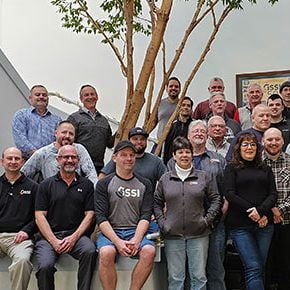New Palm Antenna for StructureScan™ Mini XT

GSSI, the world’s leading manufacturer of ground penetrating radar (GPR) equipment, announces the availability of a new accessory for the industry standard StructureScan Mini XT. The Palm XT is a miniaturized GPR antenna that is designed to greatly enhance the capabilities of the StructureScan™ Mini XT all-in-one GPR concrete inspection system. The handheld Palm XT antenna turns a basic StructureScan Mini XT into an advanced system by allowing users to unparalleled access in tightly spaced areas and overhead scanning. Designed to withstand challenging construction sites, the Palm XT is an excellent choice for contractors who need to perform concrete scanning and utility locating services.
The 2300 MHz Palm XT antenna offers superior depth penetration and resolution. It features full keypad control via the antenna top that allows for remote control of the user interface. The antenna has seamless software integration and provides users with three data collection modes; standard, cross polarization, and side car. Standard mode requires no special set up, and is ready for plug-and-play operation. Cross polarization mode highlights non-metallic objects, such as PVC, and deemphasizes metallic objects like rebar and wire mesh. Side car mode transitions the survey wheel to the side of the antenna and allows it to fit into smaller spaces.
Rugged, compact, and flexible, StructureScan Mini XT is ideal for locating rebar, conduits, post-tension cables, and voids. The Mini XT can help identify structural elements, including pan deck and concrete cover, and can also provide real time determination of concrete slab thickness. StructureScan Mini XT is the perfect blend of price and performance, and is backed by a two-year warranty. Additional accessories for the StructureScan Mini XT include an extension handle with control button options, and the LineTrac XT. The LineTrac XT adds the ability to detect AC power and induced RF energy present in conduits.



